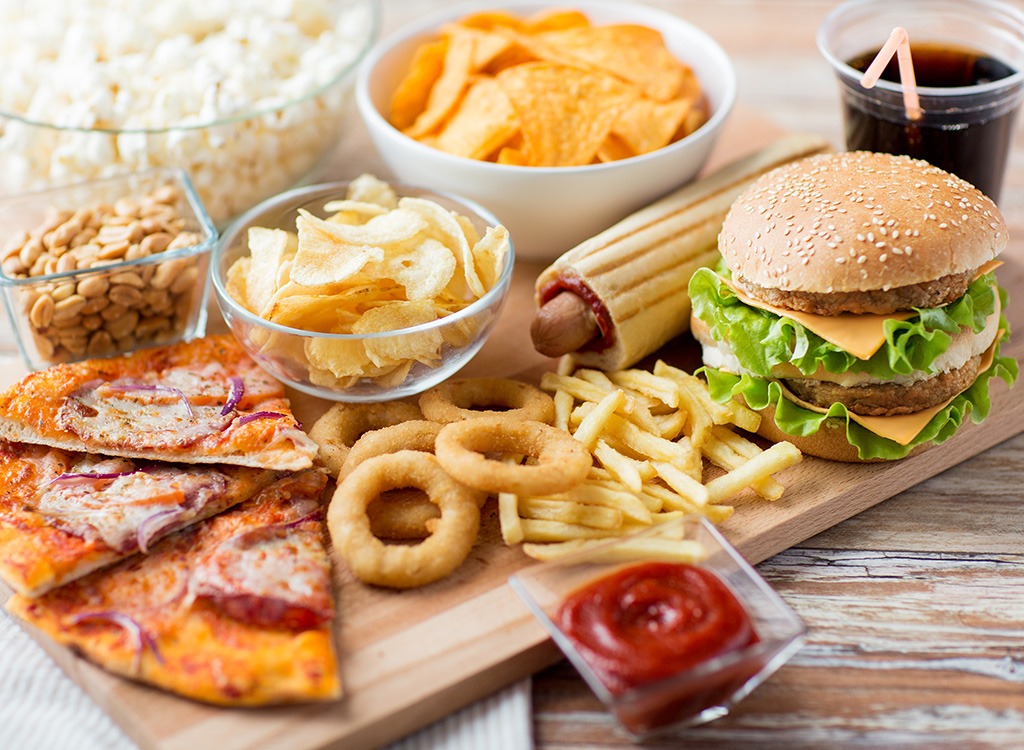What if eating junk food could actually get us abs?! Well Fitness expert Laura Ciotte explains to us blokes how Eating Junk Food Can actually result in a 6 pack, and that’s not a 6 pack of beer I’m talking about!
So how does eating junk food get you abs?
According to laura; “If you’re burning more calories than you’re consuming, it doesn’t matter what you are consuming. Be that you are sticking to the paleo diet, the atkins, the chocolate diet it really doesn’t matter! Get in a calorie deficit and you’ll lose weight.” But, finding a way of staying in a safe calorie deficit that fits your lifestyle is the key.
“MAKE SURE YOU GET YOUR MACROS”
The main problem with super restrictive diets is the fact that they ignore the key factor when it comes to reducing your weight; the energy balance equation. If you are eating less calories than you’re burning you’re pretty much guaranteed to lose weight (bar problems like a poorly functioning thyroid). The problem though is that this is way too reductionist- weight loss doesn’t always mean fat loss (let’s face it- who wants to be that bloke who lost all their gains while trying to shift those pounds!. This is where you should take your macronutrients into consideration.
These are the amounts of fats, protein and carbs that you should consume to maximize weight loss whilst minimizing fat loss at the same time, this helps to ensure you staying look lean and athletic, rather than just skinny!
Have your macros calculated
To calculate your macros, let’s presume you are a 70kg bloke. You could be consuming 2130 calories while cutting (i.e. losing weight/body fat). This should consist of 140g protein, 285g carbs and 47g of fats. Then you need to pick food which totals this throughout the day, a good principle to adhere to is stick to 80% ‘clean’ foods and the ‘allow’ yourself 20% ‘bad’ foods.
This helps to ensure that you maintain your general health and wellbeing whilst cutting and allows you the balance to enjoy the occasional pint of beer, bag of crisps etc.
Therefore, if you want to have a pizza takeaway for lunch you would simply need to reduce your total calorie, carbs and fats intake slightly throughout the rest of the day, which can be as simple as having a smaller portion of rice with your lunch, or skipping dessert.
This flexible dieting allows you to have ‘naughty foods’ on a daily basis, providing they are not in excess and don’t take you over your macronutrients/calories.
So this brings me to how to calculate your macros:
Use these steps to calculate your macros
1) Use a Baseline metabolic rate (BMR) calculator
2) Multiply your BMR result by your physical activity level (PAL).
This will be 1.2 if you are bed bound, 1.4 if you are fairly sedentary (have an inactive job like working in an office), 1.7 if you’re active (have a reasonably active job role for example shop assistant) or 2.0 if you’re very active every day and have a highly active role e.g. laborer.
3) Ask yourself, do you want to gain or lose weight?
If you want weight gain: To maximize muscle gain and minimize fat gain we will be reasonably conservative allocating extra calories and just add 10% to the maintenance calories. For example, for me, this is 1,975 x 1.1 which comes out at 2,173 calories. These are the number of calories I should consume on average per day whilst on a bulking/muscle gaining phase.
If you want to lose: To prevent losing precious muscle mass and ensure it is just fat that we are losing, we should put ourselves in a reasonable deficit of 500 calories per day. So simply minus 500 from your figure for maintenance calories. For example my maintenance came out at 1975 calories so for weight loss that would be 1475 calories.
4) Work out your macronutrients.
Protein: Aim for 2g per kg of bodyweight. For example, I weigh 70g so would need 140g protein per day to maximize muscle mass.
Fats: Ideally 20% of daily calories should be coming from fats. Therefore if you are having 2000 calories each day you should ideally be consuming 400 calories per day from fat, divide this by 9 to find out the amount of fat in grams that you should be consuming. In this example 400 divided by 9 is 44.4, so we would be eating 44g of fat per day.
Carbs: All the rest of your daily calorie intake should come from carbs. To find out how many grams you should be consuming multiply your protein intake by 4 (e.g. 140 x 4 = 560) and add this to your calculation for the daily calories coming from fat (e.g. 560 + 400 = 900). Next minus this number from your total calories ( 2000 – 900 = 1100) and divide that by 4 to find the amount of carbs you will be consuming (1110 divided by 4 = 275g).
So the example will give you:
2000 calories
140g protein
44g fat
275g carbs
Applying This To Your Lifestyle:
The easiest method of tracking your macros is to use my fitness pal. Some foods are easy as they allow you to scan the packet then simply add the amount consumed, whereas others (e.g. restaurant meals) are more tricky and you will have to search for the food using the app.
Sources of the three macronutrients:
– Protein: Chicken, lamb, pork, beef, other meats, eggs, yogurt, milk, fish, cheese and protein supplements.
– Carbs: Pasta, rice, oat cakes, potatoes, junk food, rice cakes, bread, popcorn.
– Fats: Avocado, cheese, dark chocolate, nuts, seeds, coconut and nut butter.
Fuente: bloke.ie
